Alsense Tire and Brake Temperature Sensors. Optimize setup and improve lap times
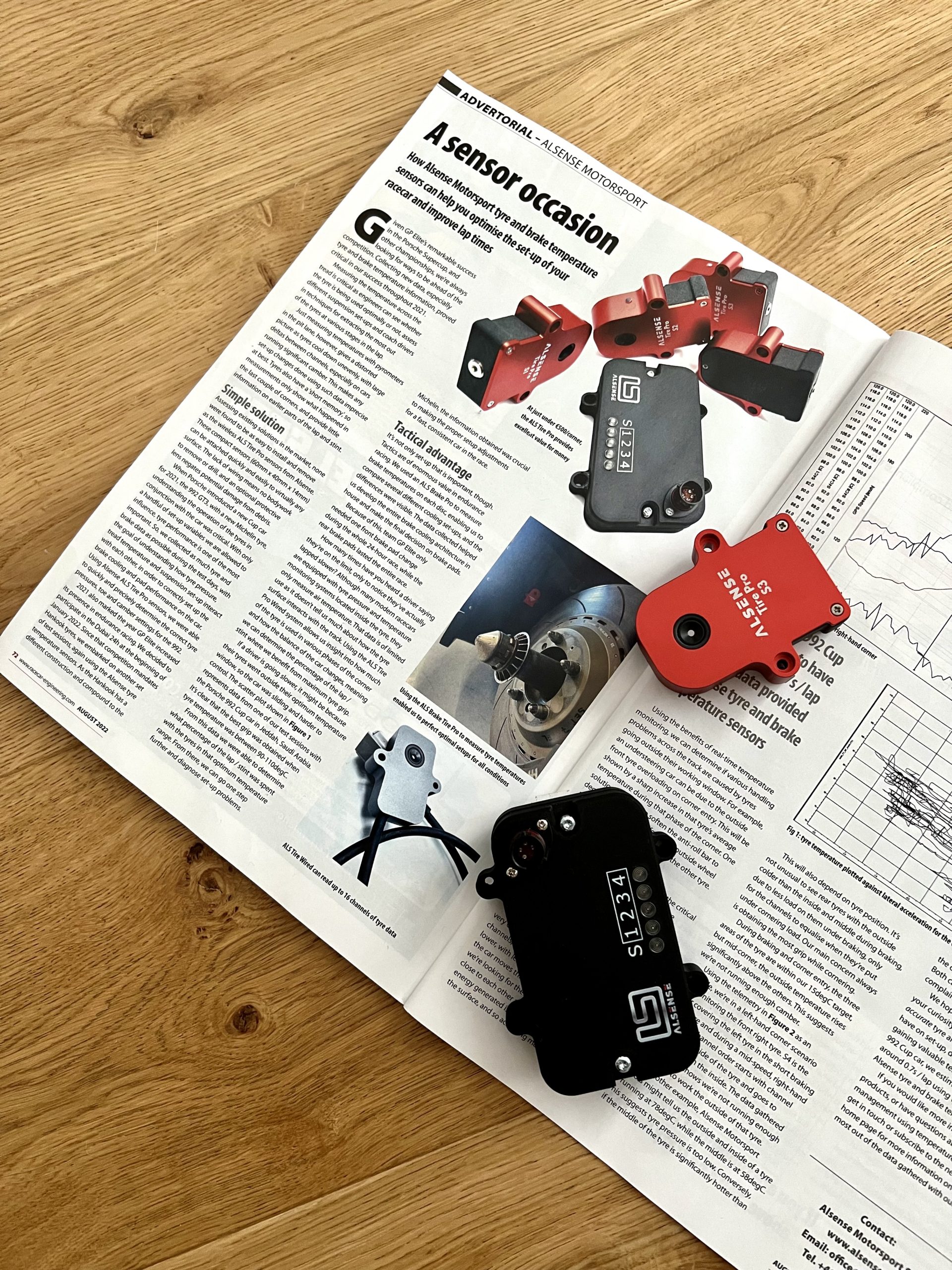
by
Ronald Hessels – Race Engineer for GP Elite
and
Alsense Motorsport
Given GP Elite’s remarkable success in the Porsche Supercup, and other championships, we’re always looking for ways to be ahead of the competition. Collecting new data, especially tire and brake temperature information, proved critical in our success throughout 2021.
Measuring the temperature across the tread is critical as engineers can see whether the tire is being used optimally or not, assess different suspension set-ups and coach drivers in techniques for extracting the most out of the tires at various stages in the lap.
Just measuring temperatures with pyrometers in the pit lane, however, gives a distorted picture as tires cool down unevenly, with deltas between channels, especially on cars running significant camber. This makes any set-up changes done using such data imprecise at best. Tires also have a ‘short memory’, so measurements only show what happened in the last couple of corners, and provide little information on earlier parts of the lap and stint.
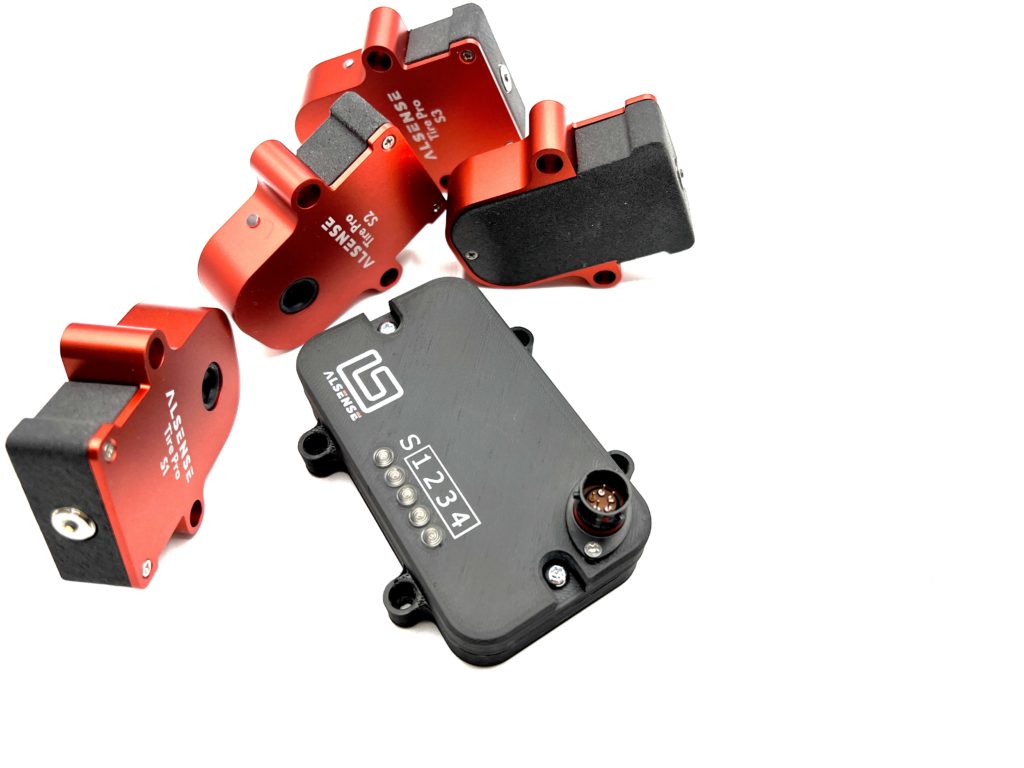
Simple Solution
Assessing existing solutions in the market, none were found to be as easy to install and remove as the wireless ALS Tire Pro sensors from Alsense. These compact sensors (60mm x 40mm x 14mm) can be attached quickly and easily to virtually any surface. The lack of wiring means no bodywork to remove or drill, and an optional protective lens negates potential damage from debris.
When Porsche introduced a new Cup car for 2021, the 992 GT3, with a new Michelin tire, understanding the operation of the tire in conjunction with the car was critical. With only a handful of set-up variables we are allowed to influence, tire performance is one of the most important.
So, we collected as much tire and brake data as possible during the test days, with the goal of understanding how tire pressure, tread temperature and suspension set-up interact with each other, in order to correctly set up the brake cooling and pad performance on the car. Using Alsense ALS Tire Pro sensors, we were able to quickly and precisely determine the correct tire pressures, toe and camber settings for the 992.
2021 also marked the year GP Elite increased its presence in endurance racing. We decided to participate in the Dubai 24h at the beginning of January 2022. Since that competition mandates Hankook tires, we embarked on another set of test sessions, again using the Alsense tire temperature sensors. As the Hankook has a different construction and compound to the Michelin, the information obtained was crucial to making the proper setup adjustments for a fast, consistent car in the race.
Tactical Advantage
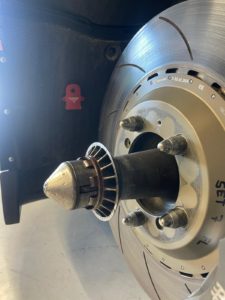
The wireless sensors can easily be installed to measure tire/brake disc temperatures
It’s not only set-up that is important, though. Tactics are of enormous value in endurance racing. We used an ALS Brake Pro to measure brake temperatures on each disc, enabling us to compare several different cooling set-ups, and the differences were visible. The data collected helped us develop the entire brake cooling architecture in house and make the final decision on brake pads. Because of this, team GP Elite only needed one front brake pad change during the whole 24-hour race, while the rear brake pads lasted the entire race.
How many times have you heard a driver saying they’re on the limit, only to notice they’ve actually lapped slower? Although many modern racecars are equipped with tire pressure and temperature monitoring systems located inside the tire , they only measure air temperature. That data is of limited use as it doesn’t tell us much about how the tire surface interacts with the track. Using the ALS Tire Pro / Wired system allows us insight into how much of the tire is used in various phases of the corner and how the balance of the car changes, meaning we can determine the percentage of the lap / stint where we benefit from maximum tire grip.
If a driver is going slower, it might be because their tire went outside their optimum temperature window, so the car was sliding and harder to control. The scatter plot shown in Figure 1 represents data from one of our test sessions with the Porsche 992 Cup car in Jeddah, Saudi Arabia. It’s clear that the best grip was obtained when tire temperature was between 90-110 deg C.
From this data we were able to determine what percentage of the lap / stint was spent with the tires in that optimum temperature range. From there, we can go one step further and diagnose set-up problems.
Using the benefits of real-time temperature monitoring, we can determine if various handling problems across the track are caused by tires going outside their working window. For example, an understeering car can be due to the outside front tire overloading on corner entry. This will be shown by a sharp increase in that tire’s average temperature during that phase of the corner. One solution might be to soften the anti-roll bar to decrease the load transfer to the outside wheel and send more cornering load to the other tire.
For our Porsche 992 Cup car, we estimate to have achieved around 0.7s / lap using the data provided by Alsense tire and brake temperature sensors – GP Elite, Porsche Supercup
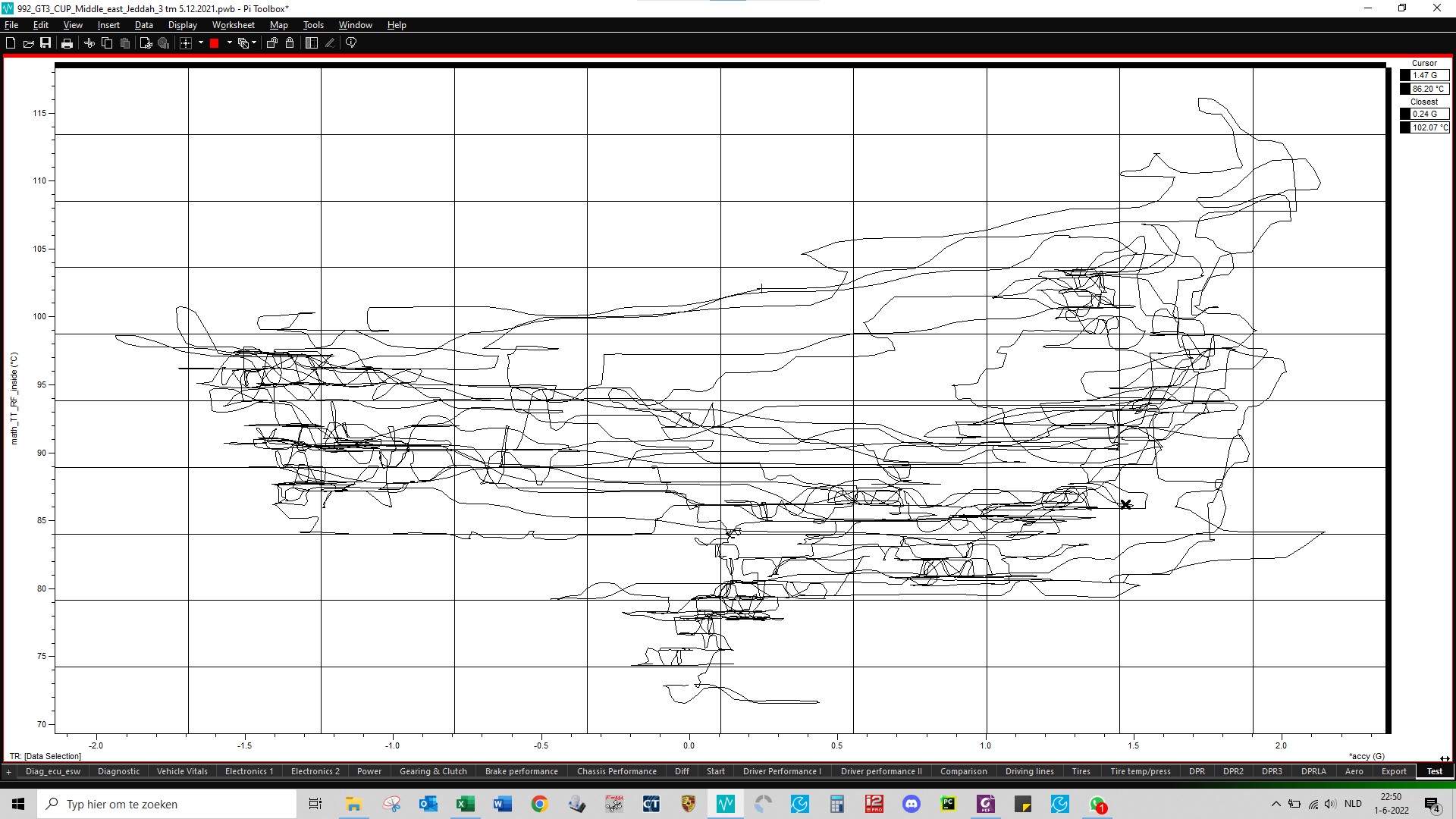
Fig 1: tyre temperature plotted against lateral acceleration for the GP Elite Porsche 992 Cup car in Jeddah
Tuning setup
Being able to tune set-up is just one of the critical functions of multi-channel tire temperature systems. The ALS Tire Wired can read up to 16 channels of tire data, while the ALS Tire Pro can read up to eight. For most applications, however, we only want to focus on three main channels: inside, center and outside the tire surface. We’re looking for a maximum of 15 deg C difference between those channels.
We’ll see normal, straight-line driving produces very close temperatures on the inside and center channels, while the outside will be significantly lower, with less load upon it due to camber. But as the car moves through the various corner phases, we’re looking for the three temperatures as close to each other as possible, signaling that the energy generated is being evenly distributed across the surface, and so achieving maximum grip. This will also depend on tire position. It’s not unusual to see rear tires with the outside colder than the inside and middle during braking, due to less load on them under braking, only for the channels to equalize when they’re put under cornering load. Our main concern always is obtaining the most grip while cornering.
Using the telemetry in Figure 2 as an example, we’re in a left-hand corner scenario and monitoring the front right tire . During braking and corner entry, the three areas of the tire are within our 15 deg C target, but mid-corner, the outside temperature rises significantly above the others. This suggests we’re not running enough camber.
S4, meanwhile, is the sensor covering the left tire in the short braking area before and during a mid-speed, right-hand corner. The channel order starts with channel one on the outside of the tire and goes to channel eight on the inside. The data gathered for this corner shows we’re not running enough rear camber to work the outside of that tire .
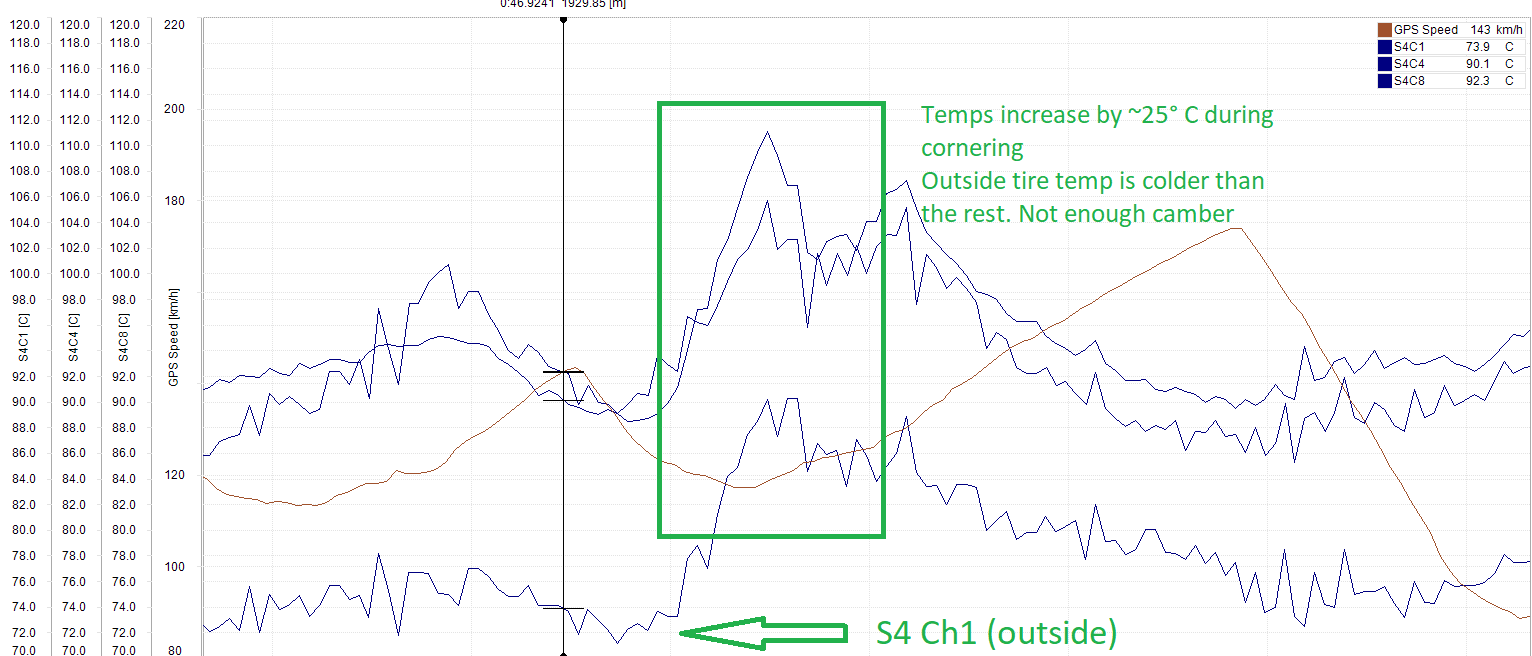
Fig 2: front right outside tyre data in a left-hand corner
For another example, Alsense Motorsport sensors might tell us the outside and inside of a tire is running at 78 deg C, while the middle is at 58 deg C. This suggests tire pressure is too low. Conversely, if the middle of the tire is significantly hotter than the outside and inside, tire pressure is too high. Both cases will likely be accompanied by a driver complaining the car is sliding around too much!
We hope we’ve managed to at least pique your curiosity regarding the many benefits accurate tire and brake temperature data can have on set-up, driver training and, ultimately, gaining valuable tenths per lap. For our Porsche 992 Cup car, we estimate to have achieved around 0.7s / lap using the data provided by Alsense tire and brake temperature sensors. If you would like more information on our products, or have questions about tire and brake management using temperature sensors, please subscribe to the newsletter on our home page for more articles and information on how to get the most out of the data gathered with our sensors.
The printed version of the article can be found in the August 2022 issue of Racecar Engineering magazine.









